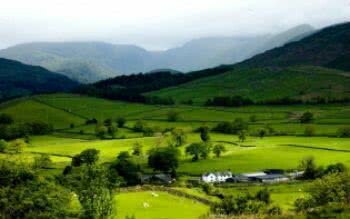Situated in the southern portion of Africa, Swaziland has no outlet to the sea and is limited to South Africa (north, south and west) and Mozambique (to the east). In 1903, the country became a British protectorate, and national independence was only won on September 6, 1968. Since then a monarchical system has been established in Swaziland.
This country has a mountainous territory covered by savannahs. The majority of the population resides in rural areas (75%), and the city with the largest population is the capital, Mbabane: 78,000 inhabitants. In Swaziland, polygamy is allowed for men, meaning they can have sex with more than one woman.
Agriculture, especially subsistence, is the main economic activity, employing more than 70% of the population, with emphasis on the cultivation of corn, pineapples and sugar cane. However, the country cannot produce enough to meet the national demand, and it is necessary to import several foodstuffs. Swaziland is also home to mineral reserves: coal, gold, diamond, iron, etc.
With a Human Development Index (HDI) of 0.498, the nation has one of the lowest life expectancies in the world – 40 years. The main responsible for this fact is the number of inhabitants infected by the AIDS virus. According to data from the United Nations (UN), one third of the adult population is contaminated (the highest rate in the world), reducing life expectancy in the country by 28 years.
Do not stop now... There's more after the advertising ;)

Coat of arms
Swaziland data:
Territorial extension: 17,364 km².
Location: Africa.
Capital: Mbabane.
Climate: Arid tropical.
Government: Parliamentary monarchy.
Administrative division: 273 tribal areas.
Languages: English and Suswati (official).
Religions: Christianity 87.6% (independent 45.4%, no affiliation 24.7%, other 17.5%), traditional beliefs 9.9%, other 1.2%, no religion and 1.3% atheism.
Population: 1,184,936 inhabitants (Men: 579,298; Women: 605,638).
Composition: Swazi 97%, English, Dutch and Zulus 3%.
Demographic density: 68.2 inhab/km².
Average annual population growth rate: 1.3%.
Population residing in urban areas: 25.17%.
Population residing in rural areas: 74.83%.
Undernourished population: 18%.
Life expectancy at birth: 40.2 years.
Infant mortality rate: 62 deaths per thousand live births.
Households with access to drinking water: 60%.
Households with access to a health network: 50%.
Human Development Index: 0.498 (average).
Currency: Lilangeni.
Gross Domestic Product (GDP): 2.6 billion dollars.
GDP per capita: 2,520 dollars.
External relations: World Bank, British Commonwealth, IMF, WTO, UN, SADC, AU.
By Wagner de Cerqueira and Francisco
Graduated in Geography
Brazil School Team
countries - geography - Brazil School



